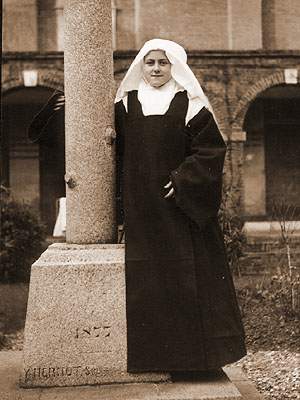
The Feast of the Presentation of Jesus at the Temple celebrates an early episode in the life of Jesus, and falls on or around 2 February. In the Latin Rite of the Catholic Church, the Presentation is the fourth Joyful Mystery of the Rosary. In the Eastern Orthodox Church, it is one of the twelve Great Feasts, and is sometimes called Hypapante (lit., 'Meeting' in Greek). Other traditional names include Candlemas, the Feast of the Purification of the Virgin, and the Meeting of the Lord.
Traditionally, Candlemas had been the last feast day in the Christian year that was dated by reference to Christmas. Subsequent moveable feasts are calculated with reference to Easter.
ScriptureThe event is described in the Gospel of Luke 2:22–40. According to the gospel, Mary and Joseph took the baby Jesus to the Temple in Jerusalem forty days after his birth to complete Mary's ritual purification after childbirth, and to perform the redemption of the firstborn, in obedience to the Law of Moses (Leviticus 12, Exodus 13:12-15, etc.).

According to Mosaic law, a mother who had given birth to a boy was considered unclean for seven days. Also, she was to remain 33 days "in the blood of her purification." Luke tells us, quoting Exodus 13:2,12, that Mary and Joseph took Jesus to Jerusalem because every firstborn child was to be dedicated to the Lord. They also went to sacrifice a pair of doves or two young pigeons, showing that Mary and Joseph were poor. Once in the temple, Jesus was purified by the prayer of Simeon, in the presence of Anna the prophetess. Simeon, upon seeing the Messiah, gave thanks to the Lord, singing a hymn now called the Nunc Dimittis:
Lord, now you let your servant go in peace,
your word has been fulfilled:
My own eyes have seen the salvation,
which you have prepared in the sight of every people:
a light to reveal you to the nations
and the glory of your people Israel.
The "light" which Simeon sang of may have given rise to the custom of blessing and lighting of candles associated with this feast, thus the name "Candlemas" (Old English - Candle Mass).
HistoryThe Feast of the Presentation is among the most ancient feasts of the Christian Church. There are sermons on the Feast by the bishops Methodius of Patara († 312), Cyril of Jerusalem († 360), Gregory the Theologian († 389), Amphilochius of Iconium († 394), Gregory of Nyssa († 400), and John Chrysostom († 407).

The earliest reference to specific liturgical rites surrounding the feast are by the nun Egeria, during her pilgrimage to the Holy Land (381–384). She reported that 14 February (the Armenian Church and Eastern Orthodox still observe the feast on this day, 40 days after the Orthodox Christmas, January 6) was a day solemnly kept in Jerusalem with a procession to Constantine I's Basilica of the Resurrection, with a homily preached on Luke 2:22 (which makes the occasion perfectly clear), and a Divine Liturgy.
Originally, the feast was a minor celebration. But then in 542 the feast was established throughout the Eastern Empire by Justinian I. In 541 a terrible plague broke out in Constantinople, killing thousands. The Emperor, in consultation with the Patriarch of Constantinople, ordered a period of fasting and prayer throughout the entire Empire. And, on the Feast of the Meeting of the Lord, arranged great processions throughout the towns and villages and a solemn prayer service (Litia) to ask for deliverance from evils, and the plague ceased. In thanksgiving, the feast was elevated to a more solemn celebration.
In Rome, the feast appears in the Gelasian Sacramentary, a manuscript collection of the seventh and eighth centuries associated with Pope Gelasius I, but with many interpolations and some forgeries. There it carries for the first time the new title of the feast of Purification of the Blessed Virgin Mary.
Late in time though it may be, Candlemas is still the most ancient of all the festivals in honor of the Virgin Mary. The date of the feast in Rome was moved forward to 2 February, since during the late fourth century the Roman feast of Christ's nativity been introduced as December 25.
The tenth century Benedictional of St. Æthelwold, bishop of Winchester, has a formula used for blessing the candles. Candlemas did become important enough to find its way into the secular calendar. It was the traditional day to remove the cattle from the hay meadows, and from the field that was to be ploughed and sown that spring. References to it are common in later medieval and early Modern literature.
Until 1969, the ancient feast of the presentation of Our Lord, which is of Oriental origin, was known in the West as the feast of the Purification of Our Lady. Since Vatican II, the feast is reckoned a feast of the Lord (as opposed to a feast of Mary), and officially designated "The presentation of the Lord."
Blessing of Candles
In the Catholic and Orthodox traditions it is the day on which believers bring beeswax candles to their local church to be blessed for use in the church or in the home.
According to post Vatican-II discipline, (if possible) the beeswax candles are to be blessed somewhere other than where the Mass is held. Often your local parish will hand out candles, or you may bring your own, to be blessed before the procession. These may be saved for later use in your home. After an antiphon, during which the candles held by the people are lighted, there is a procession into the church. During the procession to the church, the Nunc Dimittis is sung, with the antiphon "Lumen ad revelationem" (Luke 2:32). This procession into the church for Mass commemorates Christ's entrance into the temple.












